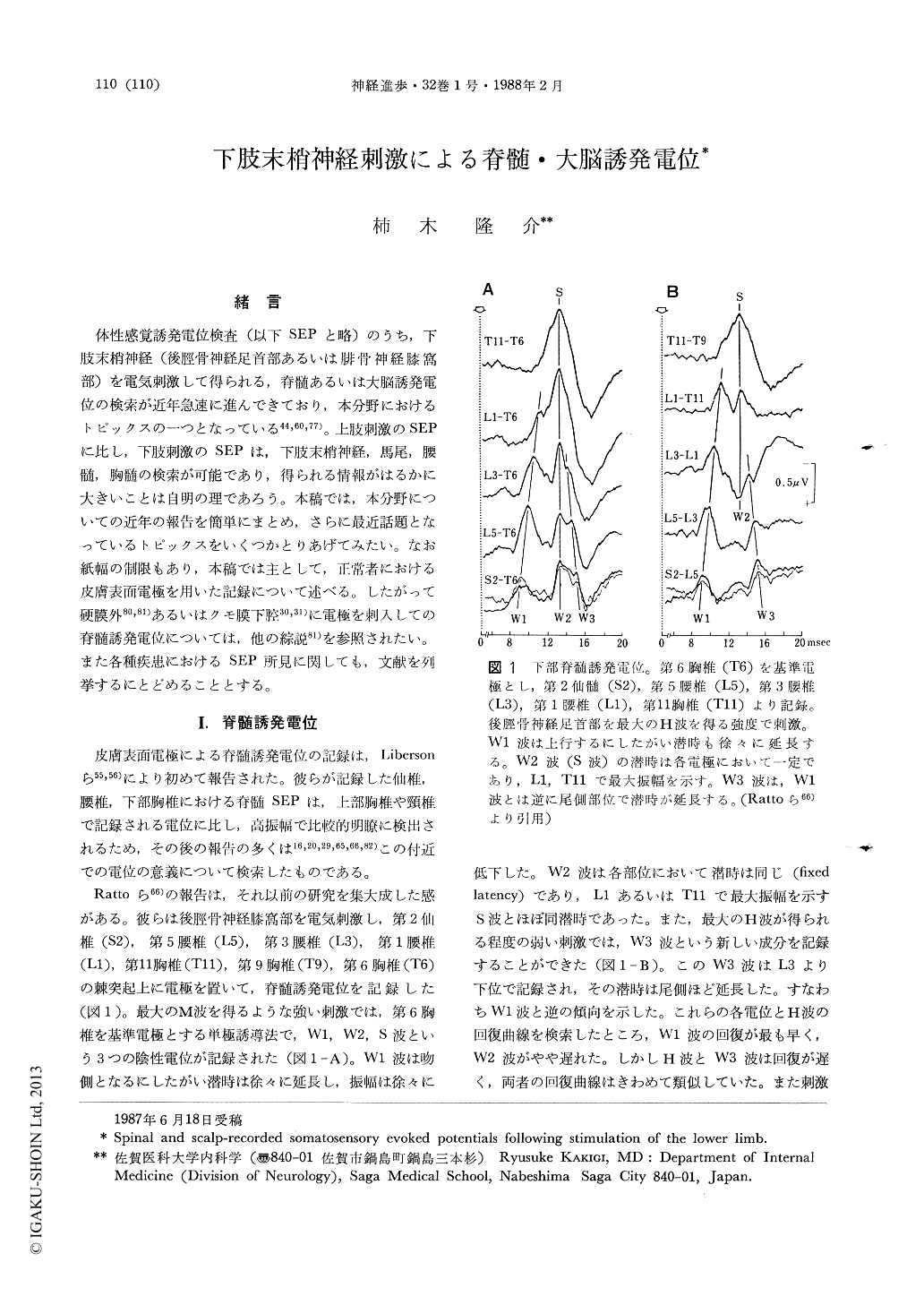Japanese
English
- 有料閲覧
- Abstract 文献概要
- 1ページ目 Look Inside
緒言
体性感覚誘発電位検査(以下SEPと略)のうち,下肢末梢神経(後脛骨神経足首部あるいは腓骨神経膝窩部)を電気刺激して得られる,脊髄あるいは大脳誘発電位の検索が近年急速に進んできており,本分野におけるトピックスの一つとなっている44,60,77)。上肢刺激のSEPに比し,下肢刺激のSEPは,下肢末梢神経,馬尾,腰髄,胸髄の検索が可能であり,得られる情報がはるかに大きいことは自明の理であろう。本稿では,本分野についての近年の報告を簡単にまとめ,さらに最近話題となっているトピックスをいくつかとりあげてみたい。なお紙幅の制限もあり,本稿では主として,正常者における皮膚表面電極を用いた記録について述べる。したがって硬膜外80,81)あるいはクモ膜下腔30,31)に電極を刺入しての脊髄誘発電位については,他の綜説81)を参照されたい。また各種疾患におけるSEP所見に関しても,文献を列挙するにとどめることとする。
Recent advances and some interesting subjects concerning spinal- and scalp-recorded somatosensory evoked potentials (SEP) following stimulation of the lower limb using surface electrodes were described.
Three negative components, W1, W2 (S) and W3 wave termed by Ratto et al. (1983), are clearly recorded over the sacral, lumbar and lower thoracic vertebrae. The peak latency of W1 is progressively increased in the rostral direction, while that of W3 shows the opposite trend. The fixed latency component (W2) is maximal over the upper lumbar or lower thoracic vertebrae.

Copyright © 1988, Igaku-Shoin Ltd. All rights reserved.


